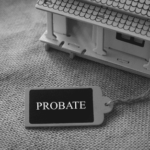Contrary to popular belief, there is no official “death tax” in state or federal governments. Instead, the term came to fruition in the 1990s and was coined by politicians who wanted to frighten taxpayers while encouraging legislators to alter the tax laws. So, though federal and state governments will levy taxes upon some estates, the government does not charge taxes on individuals simply for dying.
When people use the term “death tax,” they refer to a pair of taxes known as the gift and estate tax. Though the gift tax and the estate tax are similar because they concern the transfer of wealth to another upon an individual’s death, they are different because each focuses on a specific type of wealth transfer— an estate tax taxes an individuals’ right to transfer their property to others when they die. In contrast, the gift tax is imposed when someone gifts some of their estate and receives nothing or something of much lower value in return. But who pays the taxes? For the estate tax, the decedent’s estate pays before the assets are distributed to the beneficiaries. For the gift tax, the donor is generally responsible for paying taxes on gifts that exceed the annual exclusion amount.
In some states, what is known as the inheritance tax also fits under the “death tax” umbrella. The inheritance tax is state tax beneficiaries will pay when they receive money or property from the estate of a deceased person. However, unlike the gift and estate tax, whoever inherits the property is responsible for paying the tax, not the estate or donor.
Fortunately, neither North Dakota, Minnesota nor the Federal government collect an inheritance tax. However, the Federal government and Minnesota both impose an estate tax. The tax has exemption thresholds, meaning that an estate is exempt from the tax up to a certain amount set by the federal government or the state who is levying the tax. As of 2022, only estates that are worth more than $12.06 million are subject to the federal estate tax, while Minnesota’s exemption threshold is $3 million.
The Federal government also imposes a gift tax, but gifts under the annual exclusion amount of $16,000 are not taxable. Typically, the gift tax is also lower than the estate tax because it is calculated on the amount given and not on the entire estate’s value.
Lastly, most estates are not subject to the “death tax.” According to IRS data, historically, between 1% and 2% of adults who die each year owe estate tax, but between 2011 to 2016, only around 0.2% of adults paid estate tax. While in Minnesota, as of 2017, fewer than 2% of estates pay estate tax.
So even though the “death tax” may be a daunting buzzword used in political circles, with proper estate planning, the “death tax” can be avoided by keeping estates under the threshold, setting up trusts, transferring your life insurance policy, or making strategic use of gifting.
If you have questions regarding this topic, please contact the SW&L Estate Planning team at 701-297-2890 or email us at: info@swlattorneys.com.
The information contained in this article and on this website is for informational purposes only. Do not rely on the information on this website as legal advice.










